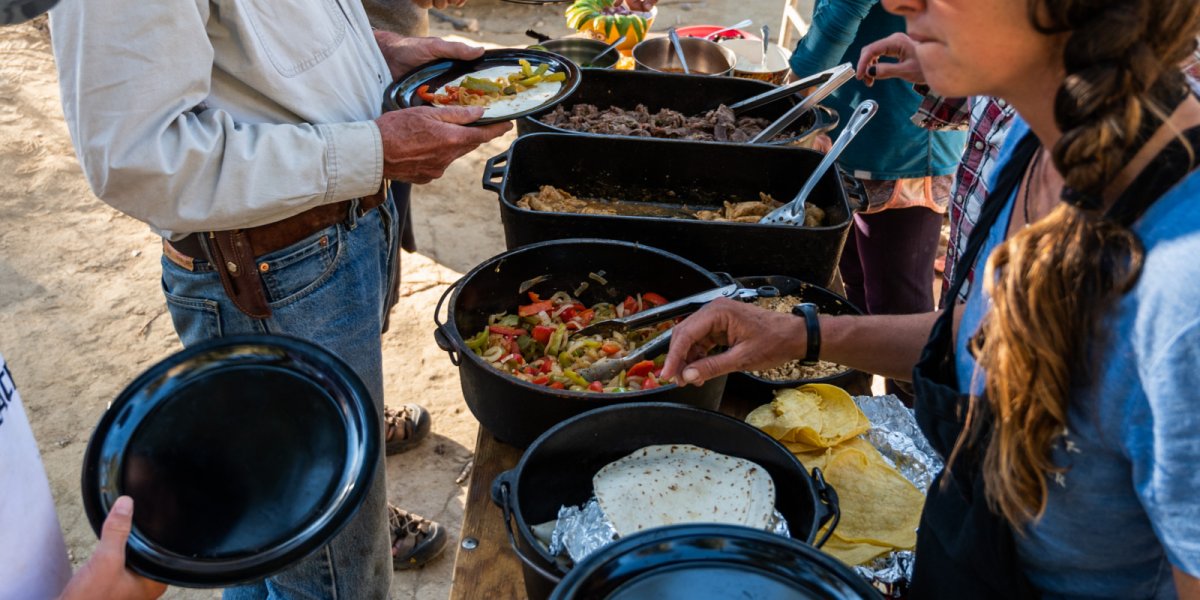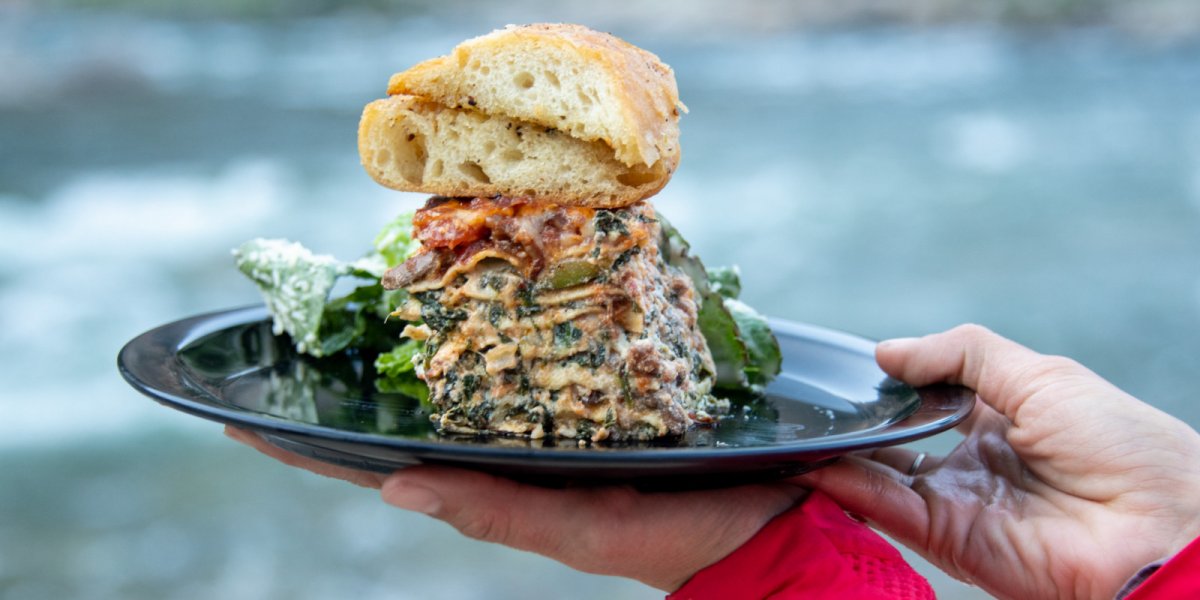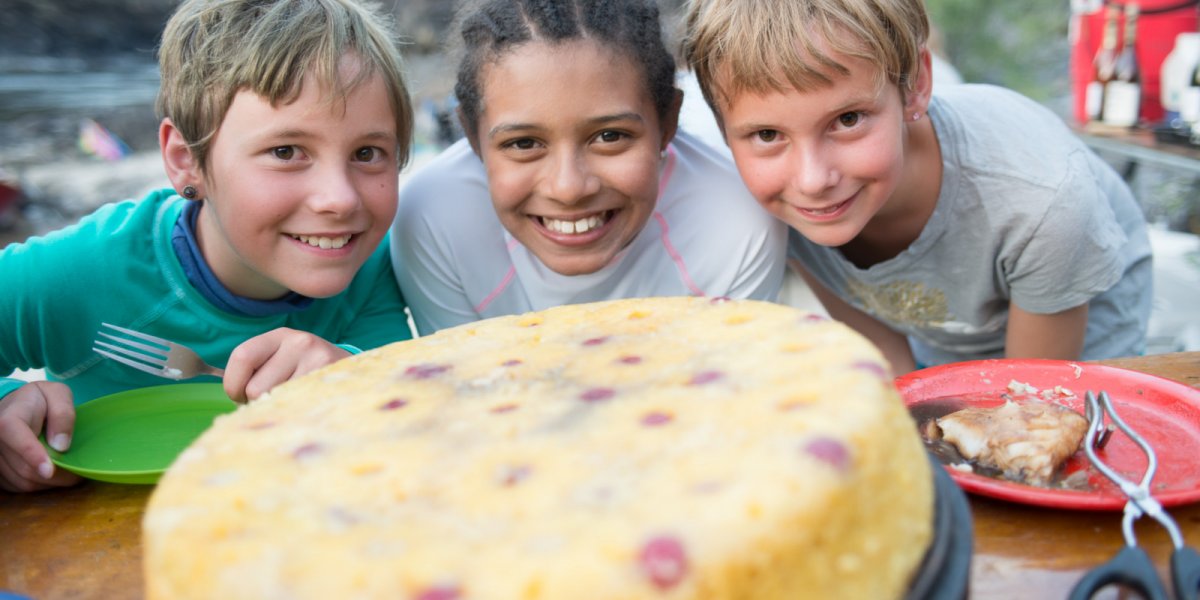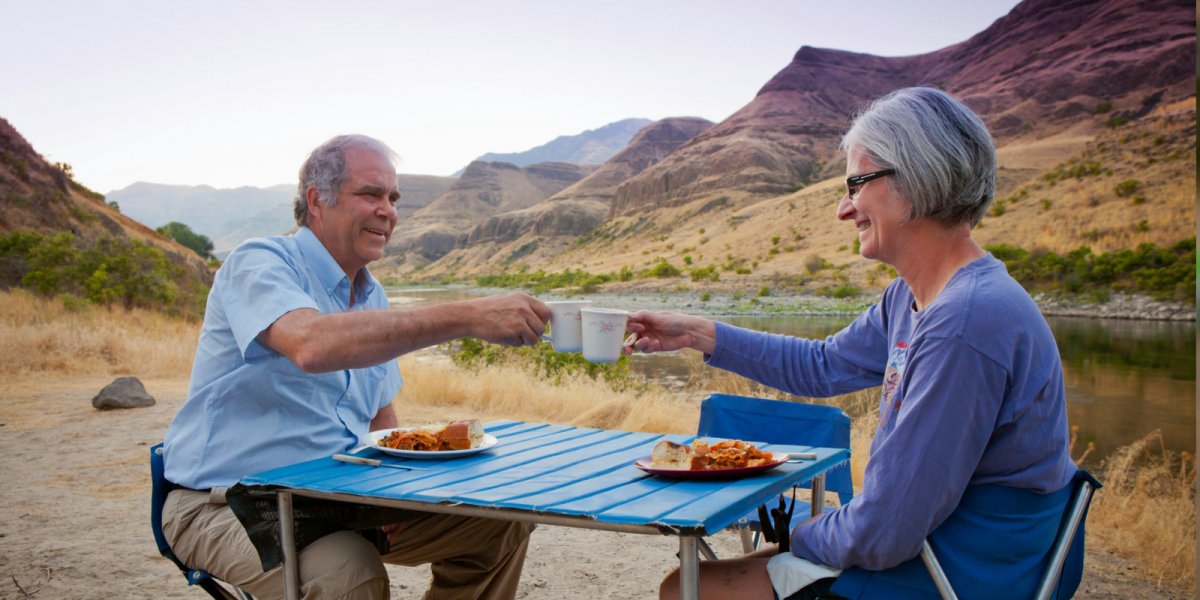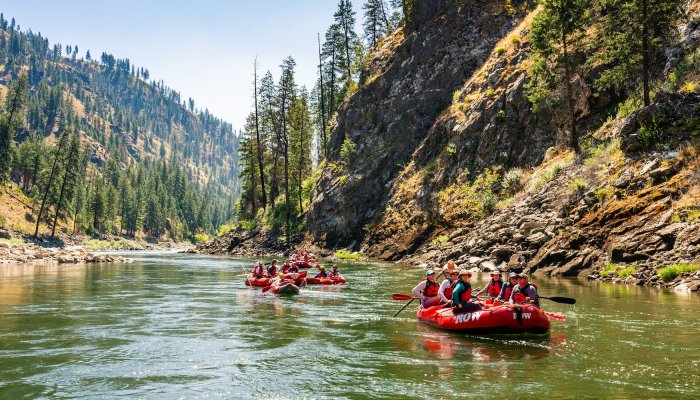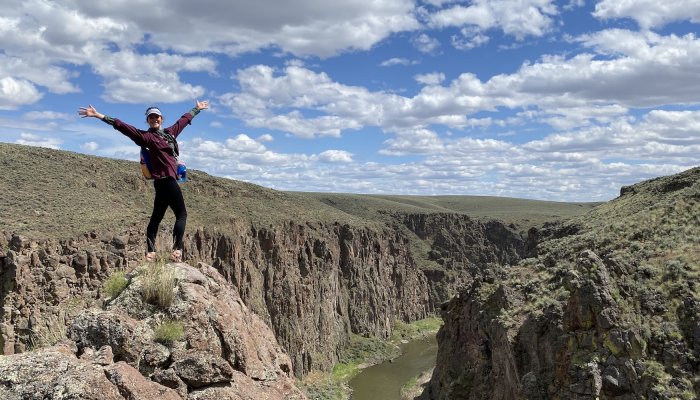Mastering Dutch Oven Cooking on the River
There are few pieces of kitchen equipment more important to the river kitchen than the Dutch oven. Also known as a casserole dish in much of the world, these thick-walled cooking pots have been used for hundreds of years and are similar to Japanese tetsunabe and South African potjiekos.
Made from seasoned cast iron or aluminum, they make camp cooking easy as they are highly durable and can be used for a variety of dishes. The high walls make it easy to cook large quantities of food for hungry rafters (without it spilling over the edge) and they will keep your food warm much longer than a traditional frying pan.
With a Dutch oven in your kit, you don’t have to worry about packing multiple saucepans and baking trays as this versatile piece of equipment will do the job. It can be used as a frying pan, a serving tray, and as a pot, as well as being used to keep cooked food hot before serving.
For first-timers, cooking with a Dutch oven may seem daunting but it’s actually much easier than it looks. With a few simple techniques, you’ll be dishing up hearty lasagnas and pineapple upside-down cakes before you know it.
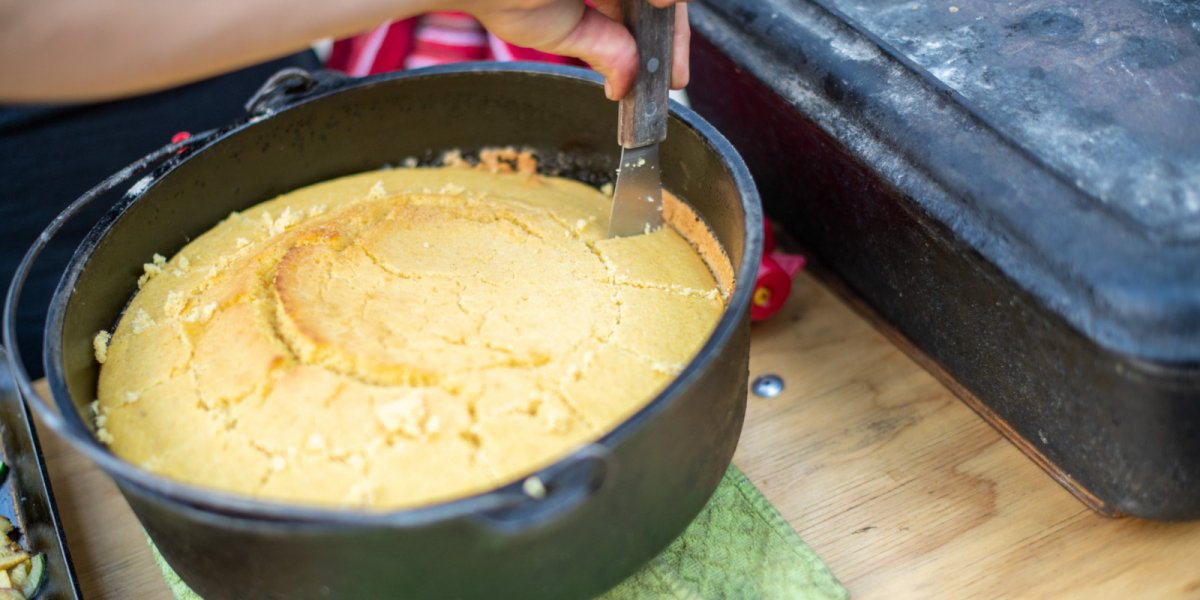
A ROW Guide slices up some freshly baked dutch oven cornbread for hungry rafters!
What is a Dutch Oven?
Outdoor Dutch ovens traditionally have a slightly concave, rimmed lid that allows pieces of coal to be placed on top, as well as a wire-bail handle. They usually have three legs so you can also place coal below and evenly distribute heat. Dutch ovens without legs can be used much like a conventional pot on a stove or can be placed atop a separate tripod stand. As a result of their design, Dutch ovens create a similar cooking environment to your oven at home and can cook almost anything just as well.
Traditionally, Dutch ovens were made from cast iron but aluminum models are increasing in popularity. The major benefit of an aluminum oven is that it weighs about a third of a cast-iron one. If you’re carrying multiple Dutch ovens on a trip, then the reduced weight of aluminum can make a significant difference.
ROW guests' navigate their way through the buffet line as guides serve up delicious chicken and steak fajitas from multiple dutch ovens.
How to Season a Dutch Oven
Before you use a new Dutch oven (that hasn’t already been seasoned), it is important that you season it to remove any undesirable contaminants and prevent it from rusting. Simply set your oven to 400 degrees F and while it’s heating up, scour your Dutch oven with hot, soapy water to scrub away any coating. Once it is thoroughly dried, place it in the oven just long enough to dry it, then remove it and let it cool.
You then want to rub vegetable oil or shortening over the inside and outside, making sure you get into any pockmarks or dimples. After wiping off the oil, place the Dutch oven upside down in your oven (along with the lid) and bake it for 45 to 60 minutes. Be aware that it is likely to smoke, so open your windows! Once the time is up, turn off the oven and allow the Dutch oven to cool inside for around 30 minutes before removing it.
A ROW guest displays their dutch oven lasagna before a peaceful riverside dinner.
Cooking with a Dutch Oven
First things first, a Dutch oven should be oiled or covered with parchment paper before the ingredients are added. Then simply add your dessert mix, layer your lasagna or prepare your dish as you would at home. If the recipe calls for a lot of oil or butter, you can probably do away with the extra oiling at the start!
While you are preparing the dish, you want to heat the coal over a fire but not so long that they turn to ash! Once they have stopped smoking or at least two-thirds of the coal is red, they are usually ready to use.
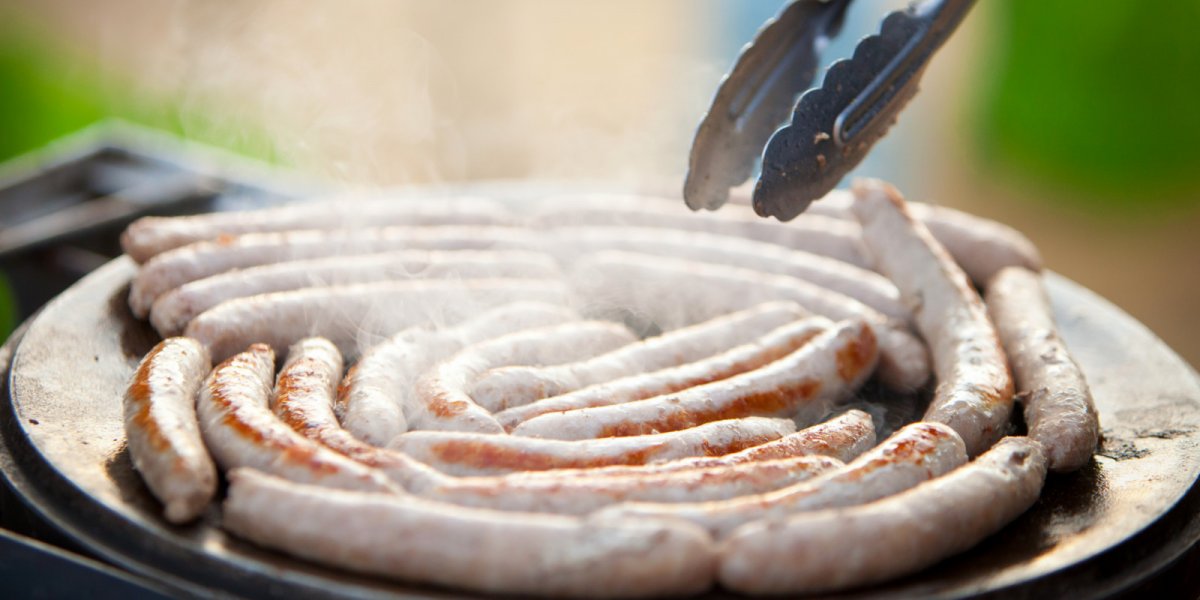
The smell of freshly seared sausage links greets our Snake River rafting guests as they wake up along the river.
Placing the Coal
Using a shovel and/or fire tongs, safely place the hot coals above and below the Dutch oven. It’s hotly debated how many you should use and it also depends on the dish you are cooking and the surrounding conditions. Strong winds or very cold temperatures will probably mean you need to add more coal while desserts usually require fewer pieces as you don’t want them to cook too fast and dry out.
Generally speaking, you want double the number of coals compared to the diameter of your Dutch oven. Many rafters use the “Three Up, Three Down” rule, which means that you have three extra pieces of coal on top of the Dutch oven and three fewer underneath. As heat rises, you could easily burn the food if you place too many below. So if you have a 12-inch Dutch oven, you will need 24 pieces of coal, with 15 on the top and 9 below. When placing coal on the lid, you want to “ring” them while also putting a few in the middle near the handle.
The more you cook with a Dutch oven, the better you will get when it comes to determining the amount of coal required to achieve your desired result.
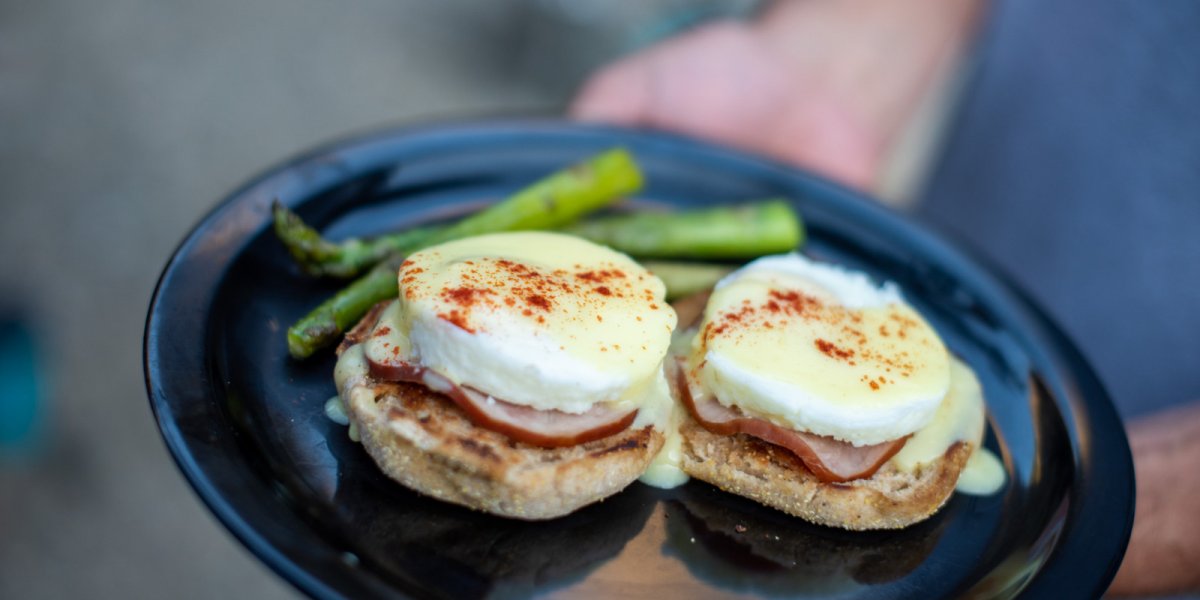
No culinary compromises out here! Dutch oven eggs benedict anyone?
Checking your Dutch Oven
Every time you lift the lid on your Dutch oven, you release heat and slow down the cooking process. So you only want to do so once you can smell the food and feel like it might be close to ready. Rafting guides often use pliers to lift the lid and check to see if the dish is ready.
Rather than losing valuable heat while trying to figure out what’s going on, it’s important that you know what you are looking for before you lift the lid. Does the dish have a golden brown top, is there a gentle bubbling, or has the dish has pulled away from the edge of the pot.
Once your meal is cooked, you want to take the coal off your Dutch oven and allow it to rest. You can gently slide the coals on the lid back into the fire and remove the bottom ones onto a pizza dish before doing the same.
Young rafters await a much anticipated dutch oven pineapple upside-down cake for dessert!
Serving From your Dutch Oven
While it may be tempting to serve your dish immediately, the residual heat inside the Dutch oven means that it probably needs to rest and cool for a little while. Not only will the dish taste better (and nobody will burn their mouth) but it makes serving a lot easier.
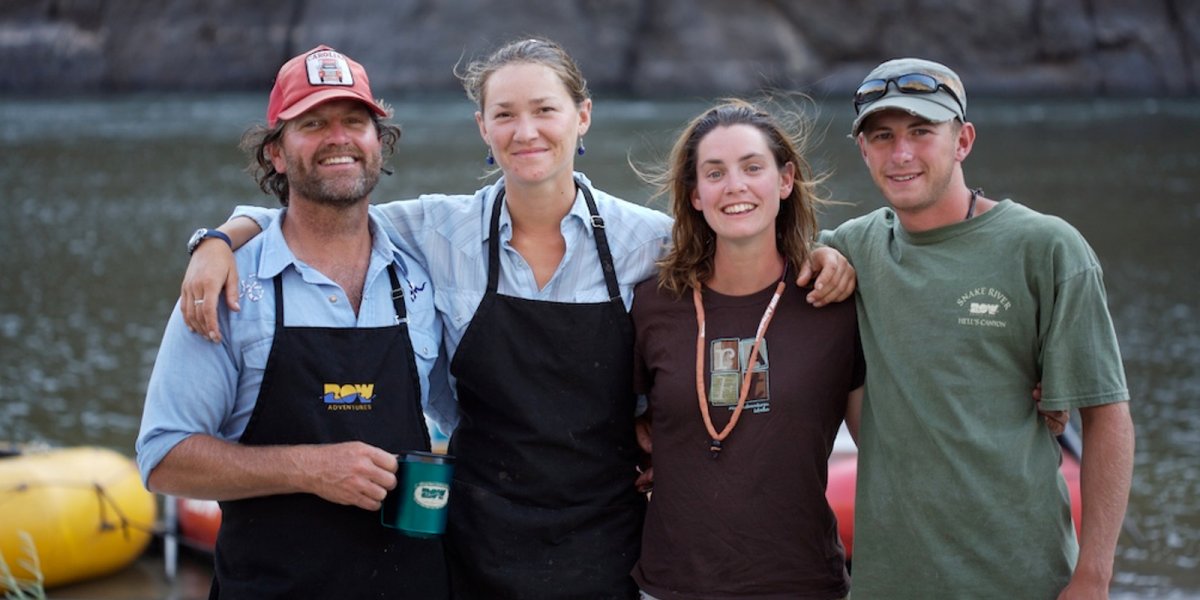
ROW Guides have long held the reputation of being excellent backcountry chefs.
How to Clean a Dutch Oven
When cleaning a Dutch oven, it’s important that you don’t use soap or bleach as they can kill the oils in the metal. It’s best to clean just with water and use a steel wool brush if there is food caked on. Once it is cleaned, dry it completely before spreading a layer of oil on the inside to prevent any rust from forming.
A couple enjoys a delicious dutch oven meal on their ROW Adventures rafting trip.
Typical Dutch Oven Meals
Almost anything that is traditionally baked can be recreated in a Dutch oven, from lasagna to beer bread and chocolate cake. For breakfast, you can make French toast or eggs Benedict while dinner favorites include prime rib, slow-cooked pork, and baked mac and cheese. Dutch ovens really shine when it comes to making dessert, with brownies, oversized chocolate chip cookies, and dump cake among the specialties. Looking for some specific ideas, check out our Recipes from Camp!
On the River or at Home
While Dutch ovens are an invaluable piece of cooking equipment on rafting trips, they are also an integral part of many home kitchens. Dishes like long-simmering short ribs, coq au vin, and scalloped potatoes can all be experimented with in a Dutch oven and many people swear by them for bread making.
Once you’ve mastered Dutch oven cooking at home, you can impress your family and friends next time you’re out camping in the wild (no packet pasta here!) Or join one of our multi-day rafting trips to watch our guides put their Dutch oven cooking skills to the test surrounded by some of the country’s most majestic landscapes.

